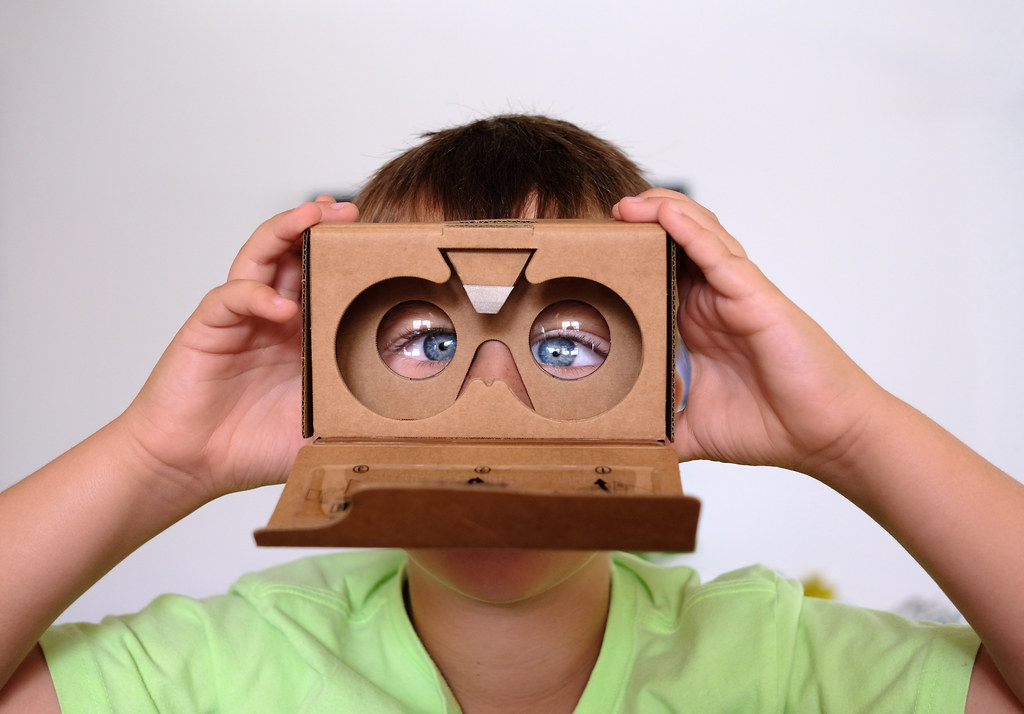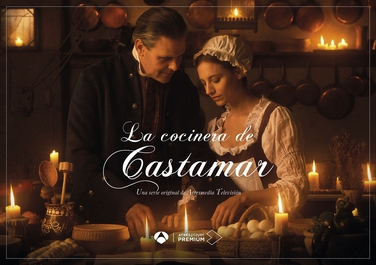Home » Posts tagged 'cultural experience'
Tag Archives: cultural experience
Virtual Field Trips with Google Cardboard
Google Cardboard is an affordable virtual reality viewer. The sets are typically made out of cardboard or plastic, keeping them cost-effective and easier to use in classrooms. By sliding a smartphone that has the Google Cardboard app installed into the headset viewer, users can experience a 3D virtual reality at a low cost.

Using Google’s Arts and Culture Expeditions, students can use their Google Cardboard headsets to take virtual field trips to a variety of places. The tool allows you to choose from five different subjects; Science and Technology, Arts, Geography, Natural History, and History. For this post, I’ll be discussing a virtual field trip that is useful for history classes.
There are multiple topics under the history tab from ancient history to Black history. By clicking on the Egypt option, viewers can take a 360-degree tour of the Pyramids at Giza. Each slide gives a brief description of the history.

After touring the pyramids the expedition moves on to teaching about The Great Sphinx. These slides give a history of The Sphinx and some fun facts as well as a 360-degree view of the historic site. Following these slides, a brief overview of the Mastabas, the structures used as tombs for nobles located near The Great Sphinx, is given as well as a tour of them.

Many other important historical locations throughout Egypt are shown in this expedition including the boat pits located at the bottom of the Khufu’s Pyramid, the Causeway, and Cairo.
On the main page for the Egypt expedition, there are even more stories to be found including Myths and Heroes and The Curse of Pharaoh Tutankhamun. Below the stories collection is 8,910 items that students can view to explore Egypt even more in-depth.
These expeditions with Google Cardboard are a great way to give students a new view of history. The tool allows them to step into the location or the time period through virtual reality, giving them a better understanding of the subject. Using Google Cardboard to teach students about the culture and rich history of regions all around the world can be made easy with the use of virtual reality.

Thank you for reading!
Samantha Pollina
Roma: La città di magico eternità
![[Image description: Rome's Trevi Fountain.] Via Unsplash.](https://blogs.stockton.edu/webtools/files/2021/11/photo-1525874684015-58379d421a52.jpeg)
Is there a city in the world more iconic than Rome, Italy? Society was practically built on Rome, which housed an empire that influenced the Western World for centuries to come. For my virtual tour, choosing Italy was a no-brainer, but I didn’t feel like a tourist for immediately leaning toward this iconic tourist city.
I am not going to focus on the Colosseum, because that’s just too touristy. So I started on Capitoline Hill, which was one of Rome’s original 7 hills. It was here that Rome’s first mint was created in The Temple of Juno Moneta (today’s Church of Santa Maria in Aracoeli). The hill became the seat of the city’s government in the year 1,000, which was also where the Senate Building and the Tabularium (Rome’s archives) stood.
Another iconic image in the Eternal City is the Spanish Steps, located in Piazza di Spagna. Thanks to its Baroque architecture that hosts the famous Barcaccia Fountain, tourists throng here every year (except for during COVID in 2020, of course).
The steps go to the Trinita Church, another Baroque marvel commissioned by Pope Innocent XII who had Francesco De Sanctis build it in the 18th century.

Perhaps nothing is more formidable than the Castel Sant’Angelo, the towering papel fortress that towers in the elegant neighborhood of Prati. This mighty structure is the guardian of the Tiber River, towering over its flowing waters for thousands of years. In 123 AD, Emperor Hadrian built the fortress as a tomb for himself and his family, and throughout the ages, it was used as an imperial mausoleum for Roman emperors until the Middle Ages when it became a fortress to protect the city. Despite this iconic stone structure’s many uses, it’s fair to say that no matter what time period it was, it symbolizes Rome’s imperial power and solidifies the city’s place as an iconic world heritage site.
The best part about taking a virtual field trip in such an iconic city is being able to learn about the history behind such imposing monuments. The Capitoline Hill was where such important politics occured throughout the empire’s history, and Castel Sant’Angelo’s 2,000+ existence over the Tiber River is a perfect symbol of the city’s significance.
Rome’s history spans centuries, but what makes it unique is its fascinating combination of ancient paganism and Old World Catholicism everywhere you look. The very cobblestones lining the piazze breathe history, whether it be ancient or from the modern era. It isn’t called the Eternal City for nothing.
The cultural and culinary experience of Netflix’s “The Cook of Castamar”
![[Image description: The Palacio del Infante don Luis, the filming location for the fictional Castmar estate on Netflix's "The Cook of Castamar".] Via Wikimedia Commons.](https://blogs.stockton.edu/webtools/files/2021/10/Palacio_del_Infante_don_Luis_Boadilla_del_Monte_01a.jpg)
The Cook of Castamar came to Netflix on July 24, 2021, but it had originally aired on Spain’s Atresmedia player early this year in February (as La Cocinera de Castamar). The show is set in 1720 Madrid and follows Clara Bellmonte, played by Spanish actress Michelle Jenner, after she starts working as a cook in the kitchen of Castamar, the estate of recently widowed Duke Diego Castamar. Clara has agoraphobia, making it impossible for her to go outside. The story centers around Clara and Diego’s love story, a relationship that is forbidden by the social expectations that prohibit aristocracy from marrying the help while still being accepted in polite society.

Diego’s estate is filled with toxic, manipulative people who want to use his wife’s recent death for their own gain. While Diego represents the highest crust of aristocracy, he is truly a kind, loving man who did not see how those around him were hurting him and his potential relationship with Clara (until the end, of course).
The culture of 18th-century European aristocracy is not exclusive to Spain, but it is still a society that is different from the one we live in now. However, Spain’s culture during this time was distinctive at this time, because it was immediately after Spain’s Golden Age. The food is what makes the cultural differences stand out, particularly with Spanish cuisine (the kind of food you wouldn’t see when watching another drama about European aristocracies, like The Tudors or Pride and Prejudice). We see Clara making chorizo with another maid, or serving sopapillas for breakfast.
Despite how foreign it seems for society to judge the relationship between a maid and her boss, social stigmas still exist in the 21st century that prevents many from giving in to their feelings (like Clara and Diego for the near entirety of the show). For example, there still seems to be a stigma surrounding couples with large age gaps, no matter the gender. As outdated as it sounds, there are even cases where interracial couples still face stigma. This is perhaps one of the main reasons why Clara and Diego’s story is so compelling; everyone loves a forbidden love story, especially because we all know what it’s like to yearn for something we can’t have.
Another major similarity the show has to my own culture is the value placed on the kitchen. The kitchen is the heart of the home, and this is something Diego recognizes even though it is where the servants mainly build their relationships (he constantly finds himself below in the kitchen to see Clara). When Clara first arrives at Castamar, the housekeeper, Mercedes Berenguer, is hostile toward her and narrows in on any rumor about Clara and Diego’s relationship. What drives her character is the social cue of needing to ensure that all of society knows that she runs a good household and keeps the servants in check (social stature is a major part of this world, economically and socially, while in the 21st-century people can rise up from how they were born). By the end, however, Mercedes and Clara grow to become friends (as she becomes friends with everyone in the kitchen), and all of this happens through the bonds that form over sharing a meal at a table. This is universal, no matter the time period, location, or culture.
The characters also do the same things for fun that we do today. That includes dancing and drinking, cooking for fun, and enjoying a meal together. The types of dances and food that they eat are the only things that are different from my own culture here in the States, but the characters’ values and actions are distinctly relatable because they are simply human.
The cultural differences, on the other hand, also come with the setting and filming locations are also distinctly Spanish. The exterior shots of Castamar were shot at the Palacio del Infante don Luis, a major national cultural site outside of Madrid. In the scenes that are filmed outdoors, especially during tense scenes with horses and sword fighting (without giving away too many spoilers), the landscape is ruggedly European. Jagged hills and rocks, dense forests of the north of Spain, and dry, open plains that are brown with winter (and look like they’d be sweltering in the summer) simply look different from the kinds of plains and forests you see in America.
Another main difference from the show’s society versus that of today’s is the use of public execution as corporal punishment. Clara’s father being executed through hanging is something that you would not see in modern society. In fact, the last public execution in America was in 1936, and in Spain, it was as recently as 1972. The point of this, however, is that they don’t happen in the 21st century.
A final thing that stands out as a cultural difference is politics. At the time, Felipe V ruled Spain and is also a character in the show. Felipe V was notoriously insane and takes away Diego’s dukedom for marrying Clara in the end. This involves the politics surrounding relationships that were not society-approved in 18th century Spain.
Today, politics do not play that big of a role in frowned-upon relationships. It’s mostly social consequences, and the lingering effects that have on a love affair are something that The Cook of Castamar gets right.
Recent Comments